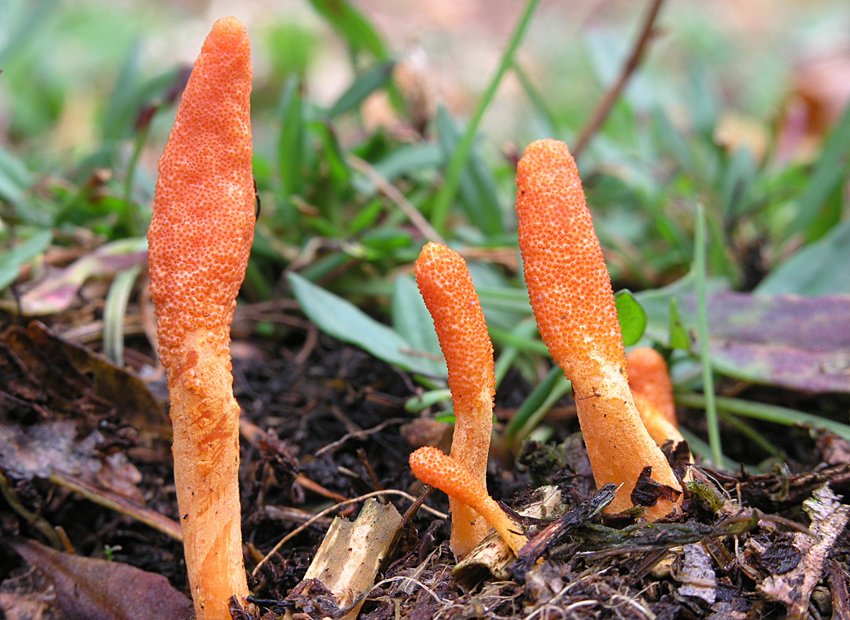Background of Cordyceps Sinensis (Catepillar) Mushroom

The Cordyceps mushrooms have a long history as medicinal fungi. The earliest clear record is a Tibetan medical text authored by Zurkhar Nyamnyi Dorje in the 15th Century outlining the tonic propensities of Yartsa gunbu (Cordyceps sinensis renamed now to Ophiocordyceps sinensis), especially as an aphrodisiac69. Modern scientific studies have confirmed and expanded on the findings of traditional Chinese medicine, that the Cordyceps fungus has a multitude of health benefits. As with the other medicinal mushrooms previously mentioned, Cordyceps sinensis contains extremely high levels of polysaccharides – especially beta-glucans as well as antioxidants and a unique nucleoside known as Cordycepin70.
Cordycepin (3′-deoxyadenosine) is a derivative of the nucleoside adenosine, differing from the latter by the absence of oxygen in the 3′ position of its ribose part. Because cordycepin is similar to adenosine, some enzymes cannot discriminate between the two. Therefore, it can participate in certain biochemical reactions (for example, be incorporated into an RNA molecule, thus causing the premature termination of certain RNA or protein synthesis). This may be a probable mechanism for the antiviral properties of Cordyceps sinensis.
RESEARCH: In traditional Chinese medicine (TCM), the main use of Cordyceps has been in the treatment of asthma and other bronchial conditions71. Studies have shown that Cordyceps may be effective against tuberculosis72, leprosy and human leukemia73.
Cordyceps has been shown to provide many health benefits in clinical studies as well as in vivo analyses.
The best-known medicinal action of Cordyceps is in the increase of physical stamina. In 1993, the Chinese National Games brought this mushroom to the attention of the world’s sporting authorities. A group of nine women athletes who had been taking Cordyceps shattered nine world records. Clinical research has shown that Cordyceps use increased cellular bio-energy, ATP (adenosine triphosphate)74. Increased synthesis of ATP and faster energy recovery have been reported. It would seem that Cordyceps improves the internal balance mechanism, thus making the utilization of oxygen more efficient. These properties may account for the overall physical enhancement, the extra endurance and the anti-fatigue effects that been reported in humans using Cordyceps.
Several scientific studies have demonstrated the benefits of Cordyceps sinensis in alleviating the symptoms of various respiratory illnesses including chronic bronchitis and asthma71.
Numerous studies have demonstrated the benefits of Cordyceps sinensis in treating heart rhythm disturbances such as cardiac arrhythmia and chronic heart failure75,76.
As with the other medicinal mushrooms, Cordyceps has been found to enhance “natural killer” (NK) cell activity, thus increasing T-cell production and acting as an immunomodulatory agent77. Extracts of Cordyceps sinensis have also shown promise in studies of liver disease78, numerous cancers73,79-81 and sexual dysfunction82.


